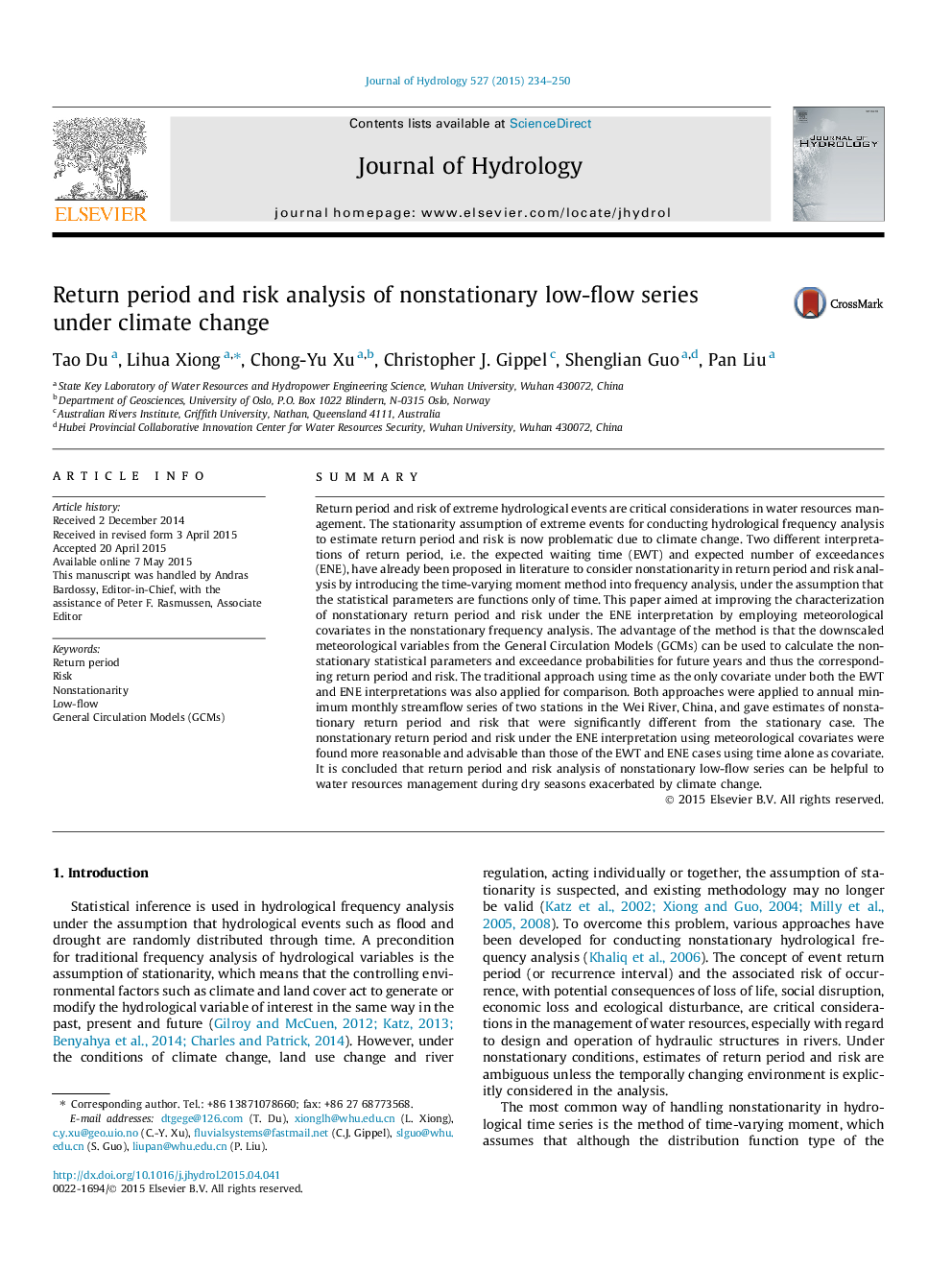| کد مقاله | کد نشریه | سال انتشار | مقاله انگلیسی | نسخه تمام متن |
|---|---|---|---|---|
| 6411070 | 1629923 | 2015 | 17 صفحه PDF | دانلود رایگان |
- The nonstationary return period T and risk R of low-flow events are derived.
- Climatic factors are introduced to describe the nonstationary frequency.
- Climatic factors are better than time in describing nonstationarity.
- Nonstationary T and R are significantly different from the stationary results.
SummaryReturn period and risk of extreme hydrological events are critical considerations in water resources management. The stationarity assumption of extreme events for conducting hydrological frequency analysis to estimate return period and risk is now problematic due to climate change. Two different interpretations of return period, i.e. the expected waiting time (EWT) and expected number of exceedances (ENE), have already been proposed in literature to consider nonstationarity in return period and risk analysis by introducing the time-varying moment method into frequency analysis, under the assumption that the statistical parameters are functions only of time. This paper aimed at improving the characterization of nonstationary return period and risk under the ENE interpretation by employing meteorological covariates in the nonstationary frequency analysis. The advantage of the method is that the downscaled meteorological variables from the General Circulation Models (GCMs) can be used to calculate the nonstationary statistical parameters and exceedance probabilities for future years and thus the corresponding return period and risk. The traditional approach using time as the only covariate under both the EWT and ENE interpretations was also applied for comparison. Both approaches were applied to annual minimum monthly streamflow series of two stations in the Wei River, China, and gave estimates of nonstationary return period and risk that were significantly different from the stationary case. The nonstationary return period and risk under the ENE interpretation using meteorological covariates were found more reasonable and advisable than those of the EWT and ENE cases using time alone as covariate. It is concluded that return period and risk analysis of nonstationary low-flow series can be helpful to water resources management during dry seasons exacerbated by climate change.
Journal: Journal of Hydrology - Volume 527, August 2015, Pages 234-250
